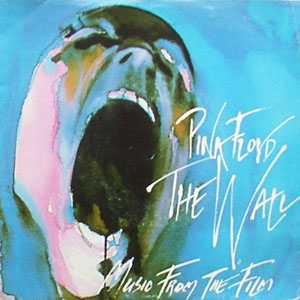- When the Tigers Broke Free
Infobox Single
Name = When the Tigers Broke Free

Artist =Pink Floyd
B-side =Bring the Boys Back Home (film version)
Released =1982
Recorded = July-December1982
Genre =Progressive rock
Length = 3:17
Writer =Roger Waters
Label =Harvest Records (UK)Capitol Records (US)
Producer = Roger Waters, James Guthrie and Michael Kamen
Chart position = * #39 (UK)
Last single = "Run Like Hell "
(1980)
This single = "When the Tigers Broke Free"
(1982)
Next single = "Not Now John "
(1983)
Misc = Extra tracklisting
Album = The Final Cut (2004 reissue)
Type = studio
prev_track = "One of the Few "
prev_no = 3
this_track = "When the Tigers Broke Free"
track_no = 4
next_track = "The Hero's Return "
next_no = 5"When the Tigers Broke Free" (also listed as "When the Tygers Broke Free") is aPink Floyd song byRoger Waters , describing the death of his fatherEric Fletcher Waters , duringWorld War II 'sOperation Shingle . The song was written at the same time asThe Wall , hence its copyright date of 1979, but not released until the movie version ofPink Floyd 's album "The Wall" and first released as a separate track on a 7" single onJuly 26 ,1982 (running ~2:55), before appearing in "The Wall" film. The 7" was labelled "Taken from the album The Final Cut" but was not included on that album until the 2004 CD reissue.The song made its first CD appearance on the 1996 album "
Royal Philharmonic Orchestra Plays the Music of Pink Floyd". In its original form, it would be released on CD for the first time with a duration of 3:42 on Pink Floyd's 2001 compilation album "". After that, the next time the song appeared was on the 2004 re-released, remastered version of "The Final Cut", where it rests between "One of the Few" and "The Hero's Return", this time an edited version of 3:16.The song sets up the story premise for "The Wall" movie, set over footage recreating the British contribution to the Anzio campaign's
Operation Shingle , where Allied forces landed on the beaches nearAnzio ,Italy with the goal of eventually liberatingRome from German control. These forces included C Company of the Royal Fusiliers, of which Waters' father Eric was a member. As Waters tells it, the forward commander had asked to withdraw his forces from a GermanTiger I tank assault, but the generals refused, and "the Anzio bridgehead was held for the price / Of a few hundred ordinary lives" as the Tigers eventually broke through the British defence, killing all of C Company, including Eric Waters.In the second verse of the song (which makes up the
reprise later in "The Wall" film), Waters describes how he found a letter of condolence from the British government, described as a note from King George in the form of agold leaf scroll which "His Majesty signed / In his own rubber stamp." Waters' resentment then explodes in the final line "And that's how the High Command took my Daddy from me".The underlying theme of the song is one of the primary
catalyst s for the character Pink's descent into isolation andinsanity throughout the story of "The Wall", especially in the film version.Film Version
The first verse is at the opening of the film, where we see Pink's father cleaning and loading a gun. It then goes to "
In the Flesh? ", showing his fate. The second verse (after "Another Brick in the Wall Part 1") shows Pink finding his father's uniform, bullets, and the letter of condolence.Trivia
*During the 2nd verse in the film, Pink finds his father's uniform, bullets, and death certificate in a
chest of drawers . On the death certificate, Pink's father's name is listed as J. A. Pinkerton. It is assumed that Pink's real name in the film is supposed to be Floyd Pinkerton.*Although the song was written at the same time as The Wall, and is used in the movie, it was not played live in Pink Floyd or Roger Waters' concerts of the album.
External links
* [http://pinkfloydhyperbase.dk/albums/tigers.htm Lyrics of the song]
Wikimedia Foundation. 2010.
